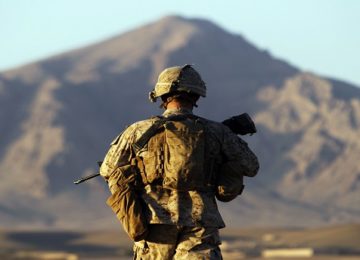American and Afghan warplanes conducted a series of strikes on Sunday night at what American officials said were Taliban drug depots, as part of what is expected to be a sustained campaign targeting the group’s $200 million-a-year opium trade.
Gen. John W. Nicholson Jr., the commander of the United States operations in Afghanistan, said that B-52 bombers and F-22 warplanes took part in the strikes, the first such attacks under new authorities granted by President Trump to officials conducting the war in Afghanistan.
“Heroin’s become a global issue,” General Nicholson told reporters on Monday during a teleconference news briefing from Afghanistan. “These criminals living in Afghanistan who are closely linked to the Taliban are responsible for 85 percent of the world’s opium.”
He said that the campaign against Taliban drug labs, which he said numbered about 400 to 500 across the country, would continue into the foreseeable future. The United States alone spends more than $8 billion to fight the drug trade.
Regional experts suggest that the campaign is necessary, as the drug trade, estimated to make up at least 60 percent of the Taliban’s income, has helped sustain the war. The Taliban have recently turned to refining heroin from the country’s vast poppy production, which greatly increases their profits.
For years, most of the harvest was smuggled out in the form of bulky opium syrup that was refined in other countries. But officials say that now, at least half of Afghan opium is processed in the country.
General Nicholson characterized the Taliban as a criminal drug organization masquerading as religious and political leaders.
“They fight so that they can keep profiting from narcotics trade and other criminal activities,” he said during a separate news conference on Monday in Kabul with the Afghan Army chief of staff. There are 13 major drug trafficking organizations in Afghanistan, General Nicholson said, seven of which are in Helmand Province, a stronghold for the militants.
The Taliban used to prohibit poppy cultivation when they governed the country in the 1990s. But since they were toppled in 2001, and later became an insurgent group, mounting a war against the Afghanistan government and its American sponsors, the Taliban have increasingly come to depend on the opium trade for funds.
In Afghanistan, the opium economy almost doubled in 2016, to about $3 billion, and amounted to around 16 percent of the country’s gross domestic product, according to the United Nations Office on Drugs and Crime. The increase in processing means that the Taliban have been able to take a greater share of the $60 billion that the global trade in the Afghan opium crop is estimated to be worth.
Mr. Trump had put little emphasis on the opium trade in his new strategy toward Afghanistan, announced in August. But General Nicholson said on Monday that the American military would support its Afghan partners in a sustained effort against the labs that have proliferated.
Still, the airstrikes on Sunday hit only 10 of the labs, General Nicholson said, signaling what could become a prolonged campaign.
“The new authorities” granted by Mr. Trump in August “allow me to go after revenue streams of the enemy,” General Nicholson said.
“These strikes required mapping” of the Taliban’s drug depots and revenue infrastructure, he said, “in ways that we have not done before.”
This article originally appeared in The New York Times on November 20, 2017. Original link.
Disclaimer: Views expressed on this blog are not necessarily endorsed or supported by the Center for Research and Security Studies, Islamabad.








